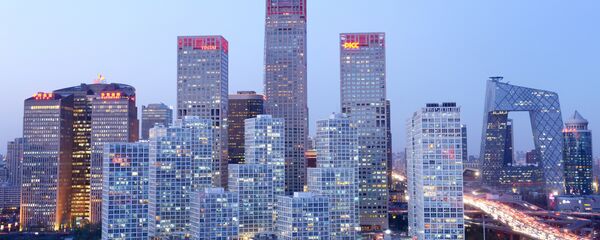We believe that the two countries are trying to counterbalance the Belt and Road (B&R) initiative with the AAGC plan, which China should take seriously and study carefully.
As early as November 2016 when Modi visited Tokyo, Japanese Prime Minister Shinzo Abe was already pledging to actively promote the AAGC. The plan supported by India and Japan is an attempt to create new sea corridors that will link Asia-Pacific countries with African countries through multiple infrastructure programs in Africa and Southeast Asia. The common purpose of the plan is to balance China's influence in the region.
India and Japan are actively planning to invest in infrastructure projects in Africa. Reportedly, Japan will join India in the expansion project of Iran's Chabahar Port and the development plan of the adjoining special economic zone.
In eastern Sri Lanka, the two countries will likely to join in the expansion project of the strategically important Trincomalee port. They may also jointly develop the Dawei deep-sea port along the Thai-Myanmar border.
It is not surprising that India and Japan are collaborating to counter the B&R. Due to a rivalry for influence in East Asia and longstanding hostility, Sino-Japanese relations have deteriorated in recent years. The Sino-Indian relationship is not so harmonious either, with the just-concluded military border standoff in Doklam. Last year, China opposed India's bid to join the Nuclear Suppliers Group (NSG), while India ignored China's opposition and invited the Dalai Lama to attend a Buddhist conference in March this year.
By exporting funds, labor, technology, industrial standards and business norms, promoting the yuan's internationalization, developing ports, industrial parks, special economic zones and military facilities under the B&R, China has increased its influence in India's neighbors in terms of business, politics and security. In the meantime, India believes that the B&R is reducing its regional advantages and posing a growing strategic threat to it.
India sees itself as a major power, and it also often compares itself against China as a reference, so China's strength may inevitably stimulate India. In addition, there is no big conflict between Japan and India in terms of strategy, but they do have a common interest in containing China. From the geopolitical, economic and security point of view, Japan and India will definitely cooperate to push forward with the AAGC plan.
The AAGC plan covers countries and regions across Africa and Southeast Asia. Close to India geographically, Southeast Asia is an important area for India to exert its regional influence.
India has a long history of exchanges with Africa. It is said that Modi has visited almost every country in Africa. With important geopolitical interests in eastern and southern Africa, India is concerned about a potential erosion of its economic interest in Africa amid declining US influence and rising Chinese influence in the region.
So far, India's influence in Africa can't compare with that of China, but it has already overtaken Japan and the US as one of the most largest trading partners of Africa. Shortly after China announced the B&R initiative, Japan unveiled its own version, which will inject about $110 billion in the Partnership for Quality Infrastructure.
The AAGC is still in the start-up stage. During the African Development Bank conference, Japan and India met separately with the member countries of the bank, discussing joint development plans for local infrastructure construction and capacity building.
From the perspective of implementing the plan, there are many problems in India's conditions, such as poor transportation links to its borders, obsolete infrastructure and huge funding gaps. Because of these problems, the Modi government has also tried to get the US involved in the plan in addition to cooperating with the Abe administration. According to the annual budget proposal by the US government, the US will revive two infrastructure projects: the New Silk Road project covering Afghanistan and its neighboring countries and the Indo-Pacific Economic Corridor linking South Asia and Southeast Asia. And India is expected to be a vital player in both projects.
The B&R certainly faces some geopolitical challenges. The AAGC plan backed India and Japan deserves serious attention from China.
This story was originally published in The Global Times.





